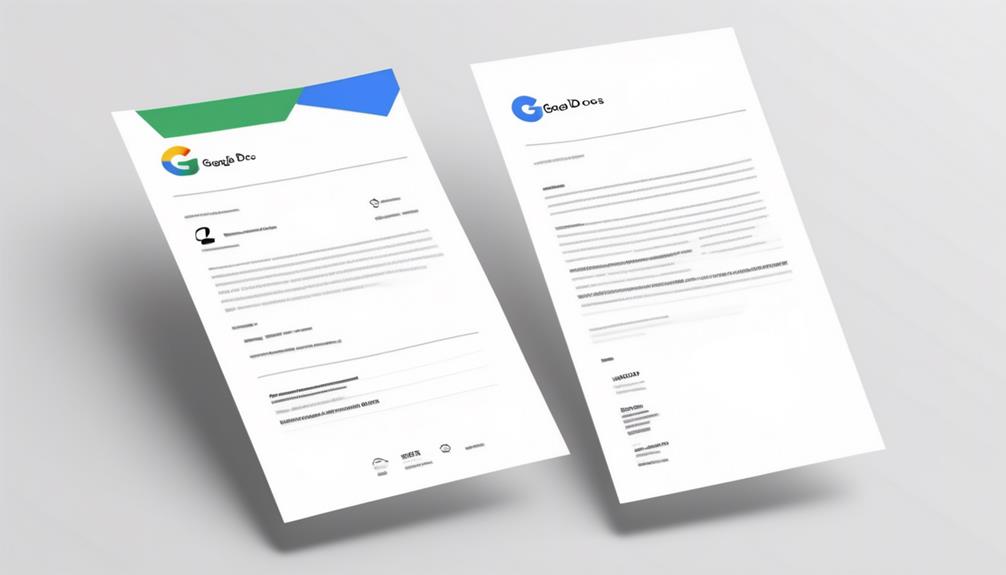You might think that becoming an expert in personalized email marketing is a daunting task, but with the right strategies, it can be done.
By implementing advanced segmentation techniques, utilizing behavioral data, and incorporating dynamic content customization, you can take your email marketing to new heights. These strategies not only enhance customer engagement but also drive conversion rates.
So, what are these six key strategies that can transform your email marketing efforts and elevate your business's success?
Key Takeaways
- Segmentation and targeting are crucial for personalized email marketing success.
- Utilizing behavioral data allows for tailoring email content to meet customers' needs.
- Data-driven personalization increases open rates and engagement.
- Customer behavior insights enable personalized product recommendations and increased conversions.
Segment Your Audience
To achieve personalized email marketing success, segment your audience based on demographics, behavior, or preferences for targeted messaging.
Segmentation is a crucial aspect of email marketing, allowing you to divide your subscribers into specific groups based on various criteria. By doing so, you can create highly targeted content and offers that resonate with each segment of your audience.
Utilize marketing automation and customer data to create dynamic segments, enabling you to tailor your email marketing strategies for different audience segments. This level of personalization ensures that the content and offers you provide are relevant and valuable to each segment, ultimately leading to improved engagement and conversion rates.
Additionally, by analyzing and refining your segmentation strategy continuously, you can optimize your personalized email campaigns for even better results.
Utilize Behavioral Data

When you utilize behavioral data, you can create more targeted and personalized emails that cater to your subscribers' specific interests and preferences.
By understanding your customers' behaviors, you can gain valuable insights that enable you to tailor your email content to better meet their needs.
This data-driven personalization allows you to deliver relevant offers and recommendations, ultimately enhancing the effectiveness of your email marketing strategy.
Data-Driven Personalization
By utilizing behavioral data, you can create more targeted messaging and offers, enhancing the effectiveness of your personalized email marketing campaigns.
Leverage customer data to create data-driven personalization strategies that resonate with individual preferences and behaviors.
Utilize the data to customize email content and craft personalized subject lines, increasing open rates and engagement.
Implement dynamic content customization in emails through the use of an email marketing platform, delivering relevant offers and recommendations based on subscriber behavior.
Gain valuable insights into subscriber behavior to enhance email segmentation and audience targeting, ensuring that your personalized emails reach the right recipients at the right time.
With data-driven personalization, you can elevate the impact of your email marketing efforts and cultivate stronger connections with your audience.
Customer Behavior Insights
Leverage customer behavior insights to personalize your email marketing efforts and drive higher engagement and conversions.
By utilizing behavioral data, you can create more targeted messaging and dynamic content customization in your email campaigns.
Gain valuable insights into subscriber behavior to better understand their preferences and interests. This allows you to send personalized emails with relevant offers and recommendations based on customer actions and interactions with your brand.
Enhance segmentation and audience targeting by leveraging behavioral data, leading to increased open rates and conversions.
Utilize customer behavior insights to deliver personalized product recommendations, ultimately resulting in higher engagement and more effective triggered emails.
Incorporating these strategies into your email marketing approach will undoubtedly improve the overall effectiveness of your campaigns.
Tailored Content Delivery
To personalize your email content based on subscriber interactions and preferences, utilize behavioral data for tailored content delivery.
Using behavioral data allows you to create the best email personalization strategy, increasing open rates and engagement. By leveraging insights from subscriber behavior, you can deliver dynamic content and personalized offers that resonate with each recipient.
Implementing personalized content delivery based on behavioral data ensures that each subscriber receives relevant content that speaks to their individual interests. Addressing recipients by their first name and tailoring content to their preferences helps to drive higher email campaign performance.
Implement Dynamic Content

Using dynamic content in personalized email marketing allows you to tailor your messages in real-time to individual subscribers, increasing engagement and driving sales. By leveraging dynamic content, you can personalize your email campaigns on a personal level, leading to higher open rates and click-through rates.
Implementing dynamic content enables you to deliver triggered emails that are based on subscribers' behavior, preferences, and interactions with your brand. Incorporating the subscriber's name and other personal details into the email content enhances the customer journey and fosters a sense of individual connection.
Moreover, dynamic content allows you to utilize customer data to create personalized recommendations, such as showcasing products based on past purchases, further increasing customer engagement and sales. This level of personalization not only enhances the effectiveness of your email marketing efforts but also improves the overall customer experience, leading to stronger brand loyalty and customer retention.
As you continue to refine your email marketing strategy, the implementation of dynamic content will be instrumental in creating compelling, personalized experiences for your subscribers.
Triggered Email Campaigns

When creating triggered email campaigns, it's essential to understand the specific actions or events that can prompt automated, personalized messages to be sent to your subscribers. Utilizing triggered emails in your email marketing campaigns can significantly impact your open rates and conversion rates. Here are some key strategies to consider:
- Leverage Personalization: Craft compelling email subject lines and email copy that resonate with your subscribers on a personal level, increasing the likelihood of engagement.
- Combat Cart Abandonment: Implement triggered emails to remind subscribers of items left in their carts, reducing cart abandonment rates and driving sales.
- Enhance Email Automation: Use automation tools to streamline the process of triggering emails based on subscriber actions, saving time and resources while maintaining relevance.
- Optimize for Conversion: Tailor triggered emails to guide subscribers through the conversion funnel, providing them with valuable content at each stage to boost conversion rates.
- Measure and Adapt: Continuously analyze the performance of your triggered email campaigns to refine your strategies and ensure optimal results.
Personalized Subject Lines

Crafting personalized subject lines is a powerful way to engage your subscribers on a personal level, driving higher open rates and boosting the effectiveness of your triggered email campaigns.
Personalization is key in email marketing to build relationships and trust with your audience. When you personalize subject lines, you can increase open rates by 50%, and using the recipient's first name can further boost open rates by 10-14%.
Personalized emails not only lead to higher open rates but also deliver 6x higher transaction rates, proving the impact of personalization on the bottom line.
Additionally, personalized subject lines improve click-through rates by 14% and conversion rates by 10%, showing the overall effectiveness of personalization in driving engagement and conversions.
Consider incorporating send time optimization to further enhance the impact of personalized subject lines, ensuring that your emails aren't only personalized but also delivered at the optimal time for each recipient.
Measure and Iterate

When it comes to personalized email marketing success, tracking email performance is crucial.
You need to adjust your strategies based on the results and continuously improve your approach.
Track Email Performance
To gauge the effectiveness of your personalized email marketing campaigns, it's crucial to measure email open rates, analyze click-through rates, and track conversion rates to understand engagement and optimize performance. Tracking your email performance allows you to make data-driven decisions and refine your strategies for better results.
Here are some key strategies to help you track email performance effectively:
- Measure email open rates to gauge subscriber engagement.
- Analyze click-through rates to understand the effectiveness of your email content.
- Track conversion rates to measure the impact of your email campaigns.
- Utilize A/B testing to iterate and optimize email elements.
- Review email performance data to identify trends and insights for refining your strategies.
Adjust Based on Results
After tracking your email performance and analyzing the data, it's time to adjust your strategies based on the results to improve the effectiveness of your personalized email campaigns.
Use email service providers and email marketing tools to measure open rates, click-through rates, and conversion rates. Utilize the insights gained to refine your email personalization and segmentation strategies.
Experiment with setting up triggered emails based on your subscribers' behavior to increase open rates and engagement. Consider using a real-time personalization platform to deliver the most effective email content to each recipient.
Continuously iterate on your best email marketing strategies, using the data gathered from previous campaigns to inform and enhance your future efforts.
Continuously Improve Strategy
Regularly analyzing and optimizing your email campaigns based on data and insights is essential for continuously improving your email marketing strategy. To master this, focus on these key strategies:
- Utilize A/B testing to measure and improve email performance.
- Continuously review and update email marketing strategy based on results and industry trends.
- Leverage email analytics tools and platforms for data-driven insights and continuous improvement.
- Track and monitor email performance metrics to measure success and inform strategy adjustments.
- Strive for personalization in email content, subject lines, and automation to build trust and strong relationships with subscribers, ultimately improving open rates and engagement.
Frequently Asked Questions
What Are Effective Email Marketing Strategies?
To create effective email marketing strategies, focus on personalization, segmentation, and automation.
By tailoring messages to individual recipients, you can boost open and click-through rates.
Segmenting your email lists based on demographics or behavior allows for targeted campaigns.
Additionally, leveraging automation for triggered emails and personalized content delivery can streamline your efforts.
These strategies can enhance engagement and ultimately drive better results for your email marketing campaigns.
What Are the 7 Email Marketing Strategies?
To maximize email marketing success, there are several key strategies to focus on:
- Personalization, segmentation, and automation: These three elements are crucial for delivering targeted and relevant content to your subscribers. Personalization involves customizing your emails based on individual preferences or behaviors. Segmentation involves dividing your email list into smaller, more specific groups based on demographics, interests, or other criteria. Automation allows you to send automated emails triggered by specific actions or events.
- Compelling subject lines and engaging content: The subject line is the first thing recipients see in their inbox, so it needs to grab their attention and entice them to open the email. Once they open it, the content needs to be engaging, informative, and valuable to keep them reading and encourage them to take action.
- A/B testing: This involves testing different versions of your emails to see which performs better. By comparing different subject lines, content formats, or calls-to-action, you can optimize your strategies and improve your open and click-through rates.
- Analytics: By analyzing data on email open rates, click-through rates, conversions, and other metrics, you can gain valuable insights into your audience's preferences and behaviors. This allows you to better understand your audience and tailor your messages accordingly.
- Maintaining a clean and updated email list: Regularly cleaning your email list by removing inactive or unengaged subscribers is important for maintaining high deliverability rates. It also helps ensure that you are targeting the right audience and not wasting resources on sending emails to people who are no longer interested.
What Are 3 Ways of Measuring Success in Email Marketing?
To measure success in email marketing, focus on three key metrics: open rate, click-through rate, and conversion rate.
The open rate tells you how many recipients engaged with your email by opening it.
The click-through rate shows the percentage of people who clicked on links in the email, indicating interest.
How to Create a Successful Personalized Marketing Strategy?
To create a successful personalized marketing strategy, start by gathering and analyzing customer data.
Next, segment your audience based on their preferences and behaviors.
Craft personalized messages that resonate with each segment.
Utilize dynamic content and personalized subject lines to increase open rates.
Finally, test and optimize your personalized email campaigns to continuously improve performance.
Conclusion
You've learned the key strategies for personalized email marketing success:
- Segment your audience
- Utilize behavioral data
- Implement dynamic content
- Use triggered email campaigns
- Create personalized subject lines
- Measure and iterate for continuous improvement
By applying these techniques, you can:
- Grab your audience's attention
- Engage them with relevant content
- Ultimately drive better results for your email marketing efforts.
Keep testing, analyzing, and refining your approach to maximize the impact of personalized email marketing.










